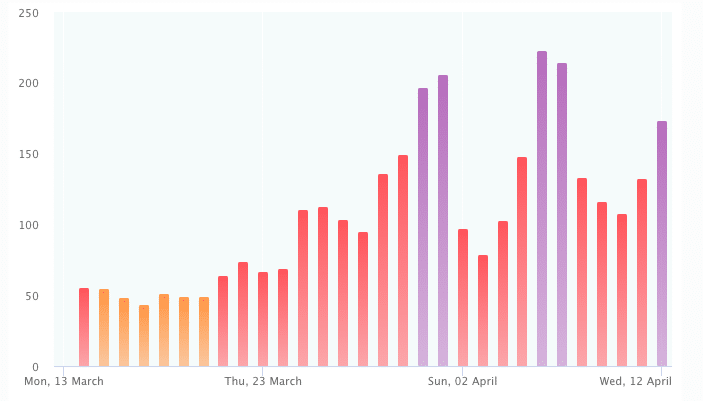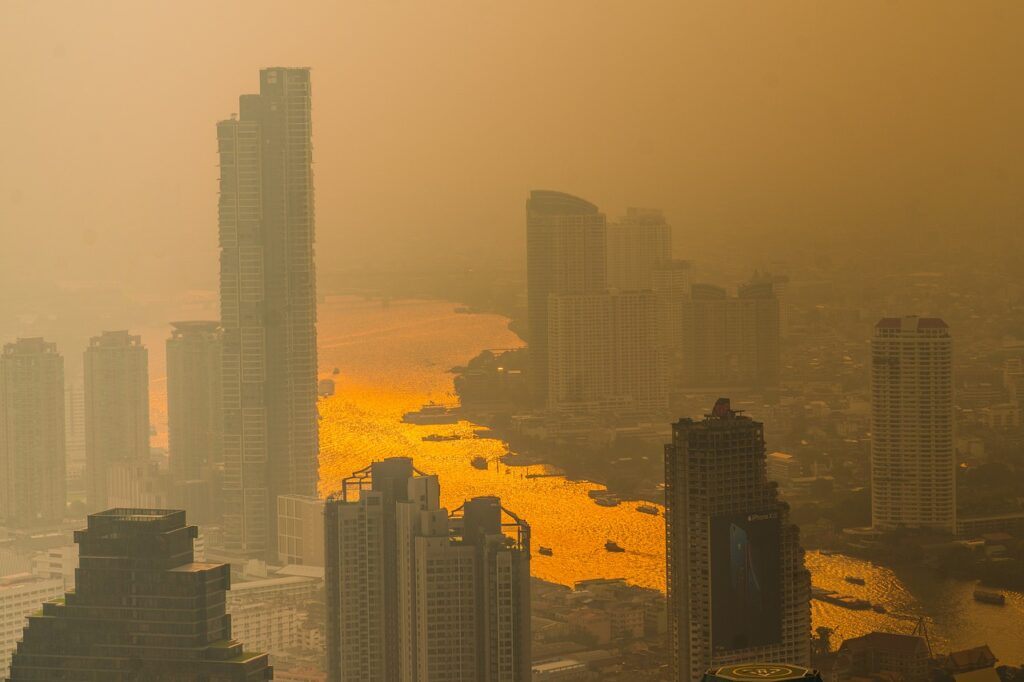For more than a month, the city of Chiang Mai in northern Thailand has been at the top of monitoring website IQAir’s global chart on air pollution, with authorities blaming a rise in forest fires and slash-and-burn practices.
—
Smoke from forest fires and crop burning continues choking Thailand, as the country’s Pollution Control Department on Tuesday reported red-coded hazardous air pollution levels in 12 areas in the upper northern provinces of Chiang Mai, Chiang Rai, Lamphun, Mae Hong Son, and Nan.
Chiang Mai – one of Thailand’s most popular tourist destinations for its picturesque mountainous views, scenic views, and historical temples – has been at the top of monitoring platform IQAir’s global chart on poor air quality for several weeks, with particulate matter concentration reaching hazardous levels, much higher than those recommended by the World Health Organisation (WHO).
Particulate matter, or PM, refers to solid and liquid particles of different sizes found in the air, including dust, soot dirt, smoke, and liquid droplets. Modern air quality studies focus on a new pollutant, a particulate matter measuring 2.5 microns or less in diameter (or about 3% the diameter of a human hair), also known as PM2.5. Due to its small size, PM2.5 can remain suspended in the air for longer periods of time and is more easily absorbed deep into the bloodstream upon inhalation, thus posing the greatest threat to human health.
According to WHO’s updated guidelines, the highest average 24-hour level for PM2.5 airborne particulate matter should not exceed 15 μg/m3. For the past three weeks, however, Chiang Mai’s PM2.5 levels have been consistently higher than 100 μg/m3. Last week, they once again surpassed the 200-mark, alarming locals and authorities, who urged the public to avoid outdoor activities.

Daily PM2.5 concentrations in Chiang Mai. Source: AQAir (April 12, 2023)
You might also like: Less Than 1% of Global Land Area Has Safe Air Pollution Levels: Study
In a statement issued on March 28, the government said that air pollution was now affecting almost 1.7 million people across Thailand, resulting in widespread respiratory issues, skin irritations, and eye infections.
According to the Maharaj Nakorn Hospital, the smoke crisis affected tens of thousands of residents in “every area in the north.”
“There are patients who can’t be admitted for medical treatment … due to continued full capacity of patients’ wards.”
Between January and March, the hospital, which is affiliated with the Faculty of Medicine of Chiang Mai University, admitted as many as 12,671 patients affected by respiratory illnesses and allergies caused by severe air pollution.
Every winter, Thailand experiences hazardous air pollution as forest fires and crop-burning activities in the region as well as in neighbouring countries including Myanmar and Laos increase.
Also known as slash-and-burn, this agricultural practice is very common in Southeast Asia. Between December and April, farmers clear-cut wild or forested land and burn the remaining vegetation, as the resulting layer of ash provides the newly-cleared land with a nutrient-rich layer that acts as a fertiliser for new crops. These fires, however, release large amounts of pollutants into the atmosphere that are associated with health issues including asthma, upper respiratory infections, conjunctivitis, and emphysema, a lung condition that causes shortness of breath.
Though open burning practices were made illegal in Thailand in 2019, farmers often circumvent the law as they cannot afford to pay workers to cut and gather leaves.
According to IQAir, air pollution in Chiang Mai caused an estimated 1,1000 deaths last year and cost the government approximately US$440 million.
Before the pandemic, Chiang Mai was Thailand’s second-most visited the city, receiving more than 10 million visitors each year. However, according to Reuters, hotel bookings have dropped to 45% occupancy, half of the expected tourism typically generated by this week’s Thai New Year holidays, known as Songkran.
Thai Prime Minister Prayuth Chan-ocha said last week he was coordinating with Laos and Myanmar to reduce hot spots in the border area to curb transboundary haze, though a majority of the pollution is still believed to come from closer sources. Authorities also expect pollution levels to drop towards the end of April, as forest fires and burn activities typically drop this time of the year.
Featured image by Peggy und Marco Lachmann-Anke from Pixabay
You might also like: Air Pollution: Have We Reached the Point of No Return?


















